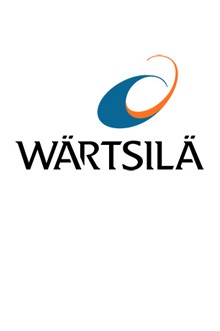

Uncoordinated ship-to-shore operations often result in extra fuel consumption, congested ports and raise the risk of accidents. All this leads to money losses for the industry players–a rather disappointing fact. E.g. containerships, on average, spend up to 6% of their time waiting at anchor due to delays at port, according to IALA.
To change this, the maritime industry needs a more efficient way to exchange information in order to digitize, simplify and optimize the maritime operations. The solution can be found in the availability of the standardized digital data. It allows for real time updates in the port call process and is followed by just-in-time (JIT) arrivals. This, in turn, creates a tangible measure to avoid the mentioned above issues. But how exactly?
One of the AIS-simulations, proving the point of JIT benefits, was carried out by Wärtsilä for the whole containership fleet to Singapore. Wärtsilä has run 4000 simulations for the optimization of the last 3 days of 50% routes, assuming an RTA communication from terminal for JIT. The extended results to Singapore volume per year are the following savings in the market:

These figures are not only profit savings for shipping companies, but also a real ecological effect for the environment and health condition of the human population.
Marine Environment Protection Committee (MEPC) also calls for sharing successful examples of initiatives taken in relation to port developments and activities. In its resolution MEPC.323(74) on Invitation to Member States to encourage voluntary cooperation between the port and shipping sectors to contribute to reducing GHG emissions from ships, MEPC names the following actions:
- onshore Power Supply (preferably from renewable sources);
- safe and efficient bunkering of alternative low-carbon and zero-carbon fuels;
- incentives promoting sustainable low-carbon and zero-carbon shipping;
- support for the optimisation of port calls including facilitation of just-in-time arrival of ships.
What platform to base on? STM

Image source: stmvalidation.eu
Sea Traffic Management (STM) is a project that has been developed during EU-financed research and innovation projects with a number of European partners within academia, governmental bodies and the industry. Through data exchange among selected parties such as ships, service providers and shipping companies, STM is creating a new paradigm for maritime information sharing, as a result of which a digital infrastructure is offered.
The goals for full deployment of STM by year 2030 in relation to year 2015 are as follows.
- Safety: 50% reduction of accidents.
- Efficiency: 10% reduction in voyage costs and 30% reduction in waiting time for berthing
- Environment: 7% lower fuel consumption and 7% lower greenhouse gas emissions.
It is STM Interoperability that stands out and provides the interconnective and awareness building platform for implementing Ports of Call initiative.
STM Ports of Call Roundtable 1.10.2019, Helsinki, Finland
Wärtsilä, as an active partner of STM program, suggested to have a face-to-face meeting with other industry players to exchange ideas about the ways of creating a more efficient, sustainable and safer maritime sector by ensuring a proper follow-up for the STM Ports of Call initiative implementation.
The idea of this meeting was to focus on the concept implementation, i.e. to set up pilot projects in different European ports and measure selected KPIs to assess the performance improvement on both vessel and shore sides.
The meeting was attended by the representatives of the following program participants: Swedish Maritime Administration, Port of Rotterdam, Port of Valencia, Port of Gothenburg, Hamburg Port Consulting and Wärtsilä.
Generally, the shared objective was agreed to be the setting up pilots for JIT arrival through shore-to-ECDIS data exchange.

The targeted outcomes, to be obtained after implementing the Ports of Call initiative, are a base for the further action list. It was confirmed that the activities should be concentrated around the reduction in the number of vessels at anchorage, drop in local emissions, improved operational efficiency, freedom to end participation in the pilot at any time and regular reports on the emissions cut and fuel that savings.
For speeding up digitalisation in shipping it is very important that multiple initiatives like STM, the International Taskforce Port Call Optimisation and leading providers of e.g. ECDIS and VTS systems start promoting the same industry standards
- Ben van Scherpenzeel, chair of the Taskforce
The today’s open dialogue among the industry players is a key to digitise, simplify and optimise the maritime operations, which unavoidably will lead to the improved efficiency of the whole sector and its positive input to the world’s sustainability. The action list, confirmed after the STM Ports of Call Roundtable, is a real step towards that input, starting with the pilot shore-to-ECDIS data exchange projects.


